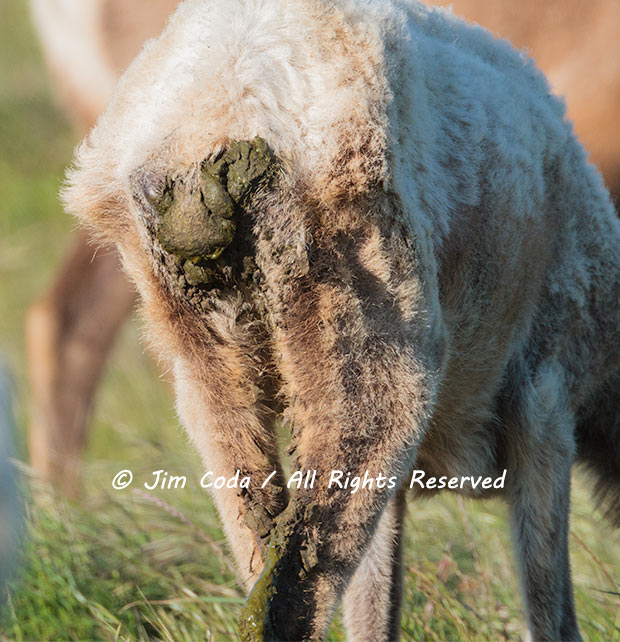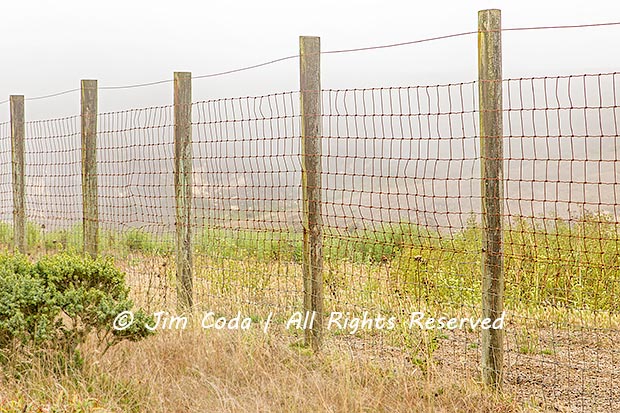Point Reyes National Seashore; Some Elk Have Fatal Disease
The current issue of the Point Reyes Light has an article reporting that five of the 200 plus wild, free-roaming elk in the park have been found recently to have Johne’s Disease. Here’s a link to the article: http://www.ptreyeslight.com/article/seashore-finds-elk-gut-disease
Johne’s (pronounced “Yo-nees”) is a bacterial disease that affects the small intestine of ruminants (cows, sheep, elk, deer etc). It is caused by Mycobacterium avium paratuberculosis (“MAP”). It embeds itself in the wall of the lower part of the small intestine. As an immune response, the walls of the small intestine become thicker. This thickening prevents the absorption of nutrients. As a result, the animal loses weight and dies. It is believed to have started in Europe and it is now a world-wide problem. Sixty-eight percent of dairy herds in the United States are infected with MAP. MAP leaves or exits infected animals in feces and milk. It can survive outside a host animal for up to a year. Even if the mother is not infected, her young can acquire it from her teats if they are contaminated with MAP-carrying manure from lying on the ground. Once it is in a herd it is virtually impossible to remove. It spreads easily from one ungulate species to another as from cattle to elk and vice versa. This information was obtained from the following sites: site1, site2.
That some elk tested positive was a big surprise because the park has been sending fecal samples to a lab for about 18 months to determine if there is Johne’s in the two wild, free-roaming Limantour and Drakes Beach herds. Hundreds of samples have been examined and all the results have been negative. That is, until now. According to the article, three elk from the Drakes Beach herd have tested positive via fecal samples. Thirty fecal samples remain to be tested. Furthermore, the park recently killed 20 elk to get tissue samples because tissue samples may be more conclusive than fecal samples. Tissue from a single natural death was added to that. Ten results are in for tissue samples and two of ten bulls from the Drakes Beach herd tested positive. Eleven samples remain to be tested, according to the article.
Johne’s is very slow in its development. It can take years before an animal may look like it might have it. It is very difficult to test for and many results are false negatives. As it progresses the first obvious signs are loss of weight and diarrhea.
Here is a photo of a Tomales Point elk that I took a few years ago. The Tomales elk are not wild, free-roaming. They are captive animals that live on the former Pierce Point Ranch on a peninsula at the extreme north end of the park. I photographed this animal because its ribs were showing, it had severe diarrhea, and I thought it might have had Johne’s Disease. The Tomales Point herd has had Johne’s since about the time the first elk were released on Tomales Point. They may have gotten it from the cattle that were there when the elk arrived.

I wrote a blog about it at the time. Here’s a link to the article: https://jimcoda.wordpress.com/2012/12/15/whats-wrong-with-this-tule-elk-at-point-reyes-national-seashore/
The Point Reyes Light article raises some questions.
It’s too bad the park didn’t wait just a little longer before shooting the 14 Drakes Beach elk, given the fact that the latest fecal samples had three positive results. Fourteen elk could have been spared. In any event, was 14 out of 92 total animals (early 2015 figure) the appropriate number of elk to kill for samples of the Drakes Beach herd? That’s 15%. Maybe. I don’t know. According to the article, the first ten tissue samples were all bulls of the Drakes Beach herd. I’m sure the ranchers were happy that 14 Drakes Beach elk were removed and especially happy that at least 10 were bulls because it’s been my experience that the bulls roam beyond the D Ranch more than the cows. Were 10 (or possibly more) bulls an appropriate number out of about 20 bulls for sampling? That’s roughly 50%. Again, I don’t know, but it seems high. Was six out of 120 total animals (early 2015 figure) the appropriate number of elk for the Limantour herd? That’s only 5%. Again, I don’t know. But since the Limantour herd is a bigger herd, wouldn’t it be logical that you would take more Limantour elk (or less Drakes Beach elk)? Again, the take was not the 15% Drakes Beach take, but only 5%.
The park may have thought it made more sense to focus on the Drakes Beach herd. It is the herd that is the main focus of a ranch management plan that will determine what to do with wild elk. The ranchers want them out of their permit areas. Cal Fish and Wildlife would be much less likely to agree to moving any of them to other elk areas in the State given that it is virtually impossible to guarantee that an individual animal hasn’t got Johne’s if its in a herd that is infected. The park would seem to be left with the choices of shooting some or all which would be highly controversial and/or moving some or all to some other suitable place in the park (which may not exist).
According to the article (and my own research), dairy operations have a high (68%) incidence rate of Johne’s Disease nationwide whereas beef cattle have a relatively low incidence rate (8%). Having animals close together seems to increase the spread of the disease and dairy cows spend much more time in close proximity than beef cattle. A 1979 study of PRNS dairy herds found five out of ten (50%) were positive for Johne’s. I have no information as to how rigorous the 1979 study was. Given how hard it is to detect Johne’s, it could be that 50% was on the low side. It may take several years for it to be obvious and dairy cows are slaughtered at a relatively young age. I don’t believe there is any testing of dairy herds at Point Reyes nowadays. There should be, especially the dairy herds that the elk share grazing land with. Furthermore, dairies not only have a much higher incidence of Johne’s than beef ranches, but they require much more water than beef ranches and they cause more environmental impacts to natural resources, especially water resources. While I find it difficult to understand how the park can justify beef ranching, given that its duty is to protect natural resources first, I don’t see how the park can possibly justify dairy ranching. It has avoided addressing ranching in any form by continuing to ignore its duty to do a General Management Plan for the park.


